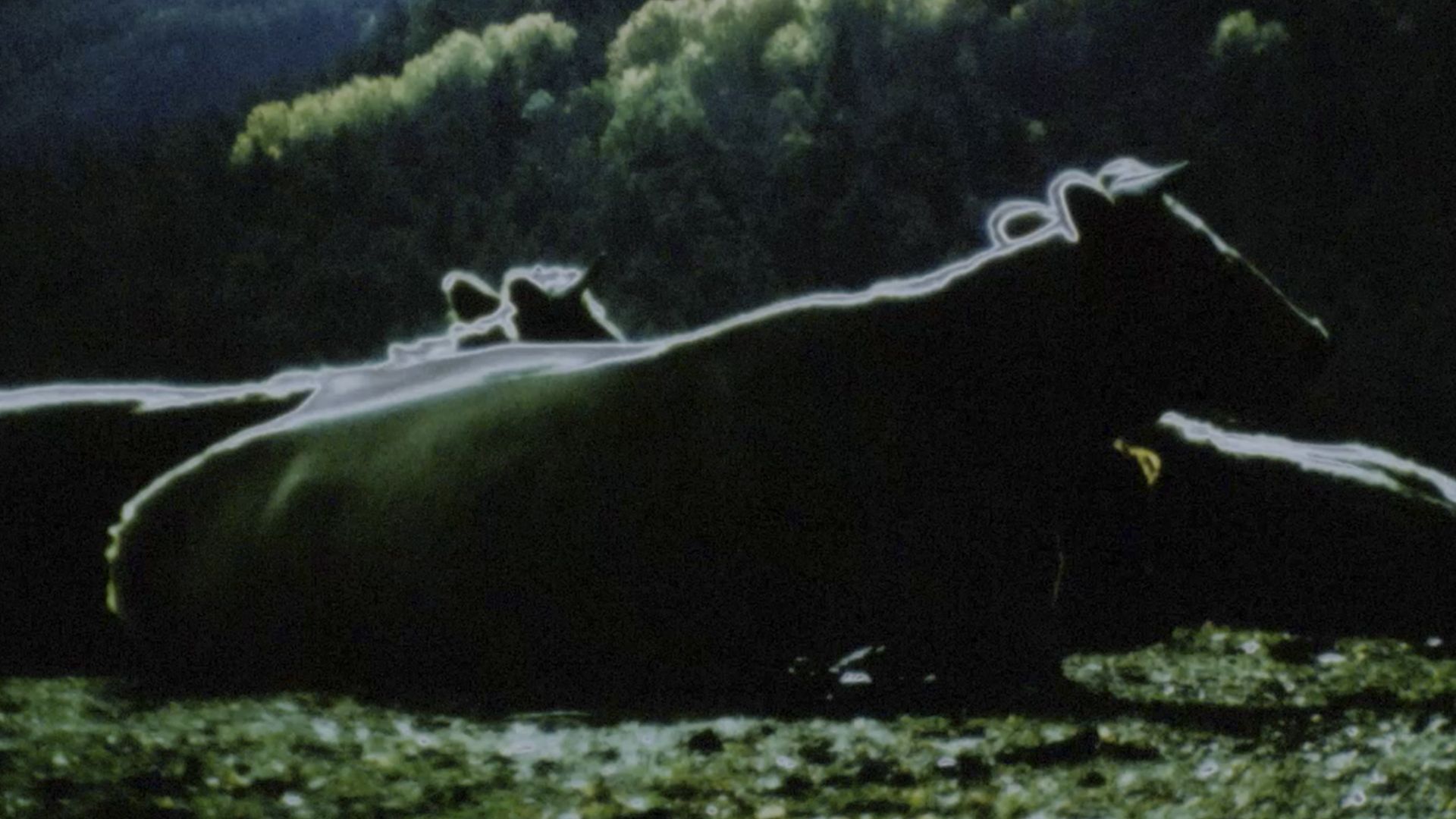GAËLLE ROUARD
PROGRAMME
Sala (S8) Palexco | Friday June 7th | 5:00 pm | Free entry to all venues until full capacity. It will not be possible to enter the venues after the screening has started



DARKNESS, DARKNESS, BURNING BRIGHT
Gaëlle Rouard | 2022 | France | 16 mm | 70 min
Handmade film in two parts, exploring a rural landscape with mythical connotations. The film is a diptych – first part: Prelude, second part: Oraison.
Darkness, darkness, burning bright
In the forests of the night
Vast flowered paths, fresh branches,
Groves full of perfumes, birds and whispers,
Site often seen again, and always contemplated
(…)
Darkness, darkness, burning bright
In the forests of the night
And the mad impulse of this distraught soul,
And that had, the forehead circled in copper, under the moon
(…)
Frail herbs, tender branches, hollyhocks,
And the shadow that brushes and the wind that knots,
And strongly, with the fists of its clouds,
On the greenish horizon, crushes suns.
GAËLLE ROUARD
EMULSION AND LITURGY
In ancient times, creating pigments was a very important part of painters’ work and routines. Resorting to bizarre materials, they tried to imitate or surpass the colours of nature: pulverised clays and rocks treated with fire or with other substances; wood or bones charred into powder, then mixed with fats, gums or waxes in order to be applied. They used minerals such as cadmium sulphide (yellow), iron oxide (red), chromium oxide (green) and ferrocyanides (Prussian blue); animals like cochineal (carmine red), and several species of sea snails (purple), as well as plants to create indigo blue. Indian yellow is even believed to have been produced by collecting urine from cattle fed only mango leaves. The Flemish painter Jan van Eyck did not generally use blue in his works, since it was obtained from the powder of semiprecious stones such as lapis lazuli—a great luxury that had to be paid for. The search for colour, for perfect tones, was an alchemy-like adventure before the age of industrial production.
The arrival of cinema—and colour cinema—also brought with it an endless number of colour processes, at one point more-or-less limited to conventions with industrial colour emulsions. Nevertheless, in this world of prefabricated products there are filmmakers who, like Flemish and Renaissance painters, seek out substances to give them the perfect tones and saturations, experimenting with photochemistry, emulsions, developing times and temperatures to find other-worldly visions. This is what Gaëlle Rouard does in her atelier-laboratory in a house in the French countryside. Rouard’s quest is a patient one: her journey in cinema began in the 90s, in the early years of the MTK self-run artists’ laboratory in Grenoble (one of the first of its kind in the world), in which she played an important part: she headed the laboratory from 1996 to 2006. During those years at MTK, Rouard opened up to experimentation and accidents, getting to know her materials well. In doing so, she came up with new discoveries, often working with found footage and creating images for collective multi-projector performances. Her first solo film also came upon separating from MTK: Unter, in 2011. Then, she was to slowly shift towards the images created by herself that she films, thinking about ways to develop and alter them photochemically afterwards.
For the most part, Rouard’s films are composed of images of the natural world. And it is correct here to use the verb “compose”, since they are often an almost imperceptible collage in which one image is inserted into another, or else several images emerge from the darkness; impossible landscapes. Her films often lead us to think of a world of shadows containing everything, parts of which are illuminated, revealing wonders hidden from view that only appear when touched by her camera. Occasionally, the different parts that said image contains move at different speeds, thus accentuating the magical halo inundating all of her film work. Rouard’s moving film-paintings induce meditative, mystical states, and hence each and every projection feels like a kind of liturgical ceremony. The supernatural, unfamiliar colours resulting from her work with the chemistry of cinema are part of that power, as is the sound. Rouard works on this part of her films with a kind of activity and intensity similar to that of the images. Her soundtracks are collages that include natural and human noises, music, bells, fuzzy samples from old films, intentional silences, field recordings, and more.
In the programme we are dedicating to her, on the one hand she herself will be projecting her feature film Darkness, Darkness Burning Bright, while we will also be hosting the performance screening of some of her works in the Overflows (desbordamentos) section. There are films like Les noces rompus (2014) in which she uses found footage, just like in Unter (2011), populated with maritime images. In these subtle performances, Rouard halts the film, intervening in it live by placing anamorphic lenses and prisms in front of the projector’s shaft of light, in addition to other actions.
Darkness, Darkness Burning Bright is composed of two parts: Prelude and Oraison. As Rouard points out, the copy that she usually projects is in fact not a copy, but the film’s original: she does not work in negative but in reversible, or with solarised film, so that what we see is what comes out of her painter-filmmaker’s atelier. The film takes us through a dark, twilight landscape where the light seems to emanate directly from the animals, the mountains, the trees, the plants. There are rhymes between images; there are recurrent sounds. We enter a natural world that does not seem to be from this one; those watching the film have their emotional state altered beyond remedy. This is how the liturgy emanating from the emulsion spills over us, since the projection of Darkness, Darkness Burning Bright is a veritable ceremony for those “cinema believers” of whom José Val del Omar spoke.
Elena Duque
